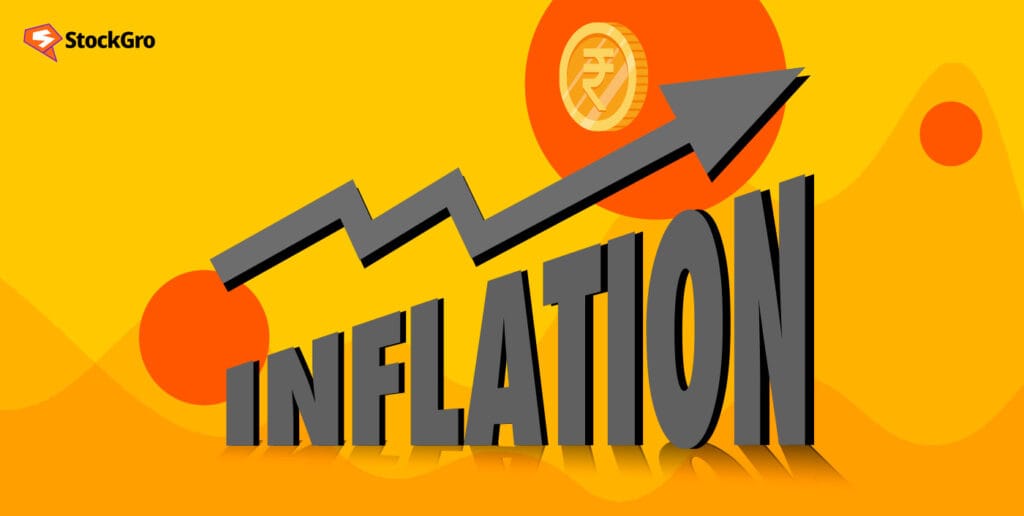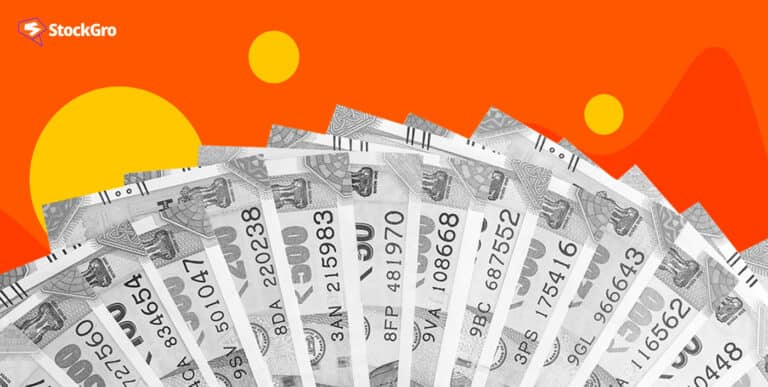
Introduction
Inflation is a crucial concept in economics. It means a general price increase that leads to a decrease in the purchasing power of consumers. For a better understanding, take any good you use daily and consider how its cost has surged in the last few years. For example, in 2002, the cost of milk was Rs. 15 per litre, but in 2023, the average retail price of milk in India increased to ₹57+ per litre. This tells us how the prices of our basic or staple commodities have been rising.
Now that we understand the basic definition of inflation, the question “what are the different types of inflation” emerges as we set out to understand economic dynamics. In this article, we’ll examine the basic idea of inflation, analysing its complexity, and how it presents itself as an indicator of economic development in our country.
What are the different types of inflation?
Following are the points for you to gain a better understanding of the different types of inflation.
- Demand-pull inflation:
One way to explain how prices of goods and services can rise is through demand-pull inflation. You can get people to pay extra if it’s in limited supply. For example, you still pay for airline tickets even though they cost far more than the regular price. It is the term used to describe this situation, in which rising consumer demand drives increasing prices.
- Cost-push inflation:
Regardless of demand, businesses must raise their prices as their costs for raw materials rise. Experts state that a price increase in raw materials that producers suffer puts businesses in a tough spot. They have two options: they can try to maintain the same profit margins in response or accept higher costs and maintain the same prices.
For example, if the cost of chicken keeps rising, your favourite restaurant will eventually have to raise the price of a chicken sandwich.
- Built-in inflation:
As cost-push and demand-pull inflation occur, workers may request wage hikes from their employers. Employers will experience the risk of labour shortage if they don’t maintain competitive wages.
This is built-in inflation, where a company increases employee compensation or salaries while trying to keep profit margins high by boosting pricing.
- Hyperinflation
It happens when prices rise incredibly quickly, causing the currency and the economy to collapse.
For example, In the 2000s, Zimbabwe went through a hyperinflationary period, with price increases exceeding one billion percent.
- Stagflation
It happens when there’s a high unemployment rate coupled with excessive inflation, causing the economy to stagnate.
The US went through stagflation in the 1970s as a result of high unemployment rates and oil prices.
Also Read: Impact of Inflation on Personal Finances
- Walking/Trotting inflation
Walking/trotting inflation refers to a slow, steady price rise throughout time. Here, the inflation rate is between 3-10%.
This kind of inflation is typically not alarming and is frequently linked to an expanding economy.Walking/trotting inflation happened in the US during the steady economic growth of the 1990s.
- Running/Galloping inflation
In contrast to walking/trotting inflation, a sharp price increase happens over a shorter period. Specifically speaking, when the inflation rate rises to 10%, it is known as a running inflation. In such a case, prices of goods and services rise rapidly, decreasing the purchasing power drastically.
One of the two main causes of running or galloping inflation is a sharp rise in demand or a fall in the supply of products. An example of this can be India’s average inflation rate of 10.1% between 2008 and 2013.
- Creeping inflation
A condition when a country’s inflation rises gently but steadily over time is referred to as creeping inflation, also known as moderate inflation. It is the mildest kind of inflation and is frequently linked to an expanding economy. It usually happens when the inflation rate is between 0-3% during a year.
On a side note, it is to be noted that there is another type of economic fluctuation, which we call deflation. It is entirely opposite to inflation. This means that the prices of goods and services ultimately fall, and the purchasing power of consumers rises under such a scenario. This happens when the demand for goods and services is low, but their supply is high.
Causes of Inflation
Inflation is caused by several interrelated variables, as discussed above.
- Demand-pull inflation, fueled by rising consumer spending that exceeds the availability of goods and services, is one of the leading causes.
- Contrarily, cost-push inflation happens when businesses pass on growing production costs to customers, such as increasing labour costs or resource prices.
- Furthermore, when prices and wages rise due to expectations of future price increases, built-in inflation may take place.
- Monetary variables that affect spending patterns and general economic activity, such as an excessive money supply or interest rate fluctuations, can also cause inflation.
These factors ultimately create an environment in which purchasing power constantly shifts, mostly downwards, and costs mostly shift upwards. Thus, inflation happens.
How to safeguard yourself from inflation?
Here are some methods to safeguard your finances regardless of whether the economy is experiencing inflation:
1. Focus on asset creation by buying different assets like equity, inflation-index bonds, bullion and real estate to ensure long-term planning and survival.
2. Spend sensibly and try to save as much as possible.
3. Invest in diversified funds and balance your total holdings.
4. Consider purchasing financial protection-focused insurance, such as health and life insurance, to safeguard your finances in case of medical emergencies.
Also Read: What are inflation-indexed bonds, and why should you care?
Conclusion
Inflation is inevitable in any economy as supply and demand fluctuate. In reality, a modest level of inflation stimulates the economy and benefits its producers and consumers. This article discussed the types and causes of inflation in economics.
We hope this article helped you gain a better understanding of it all. Share this article with your friends and family members to increase awareness about inflation and how to tackle it. You can even use it to explain the types of inflation. For more such articles, visit Stockgro.

